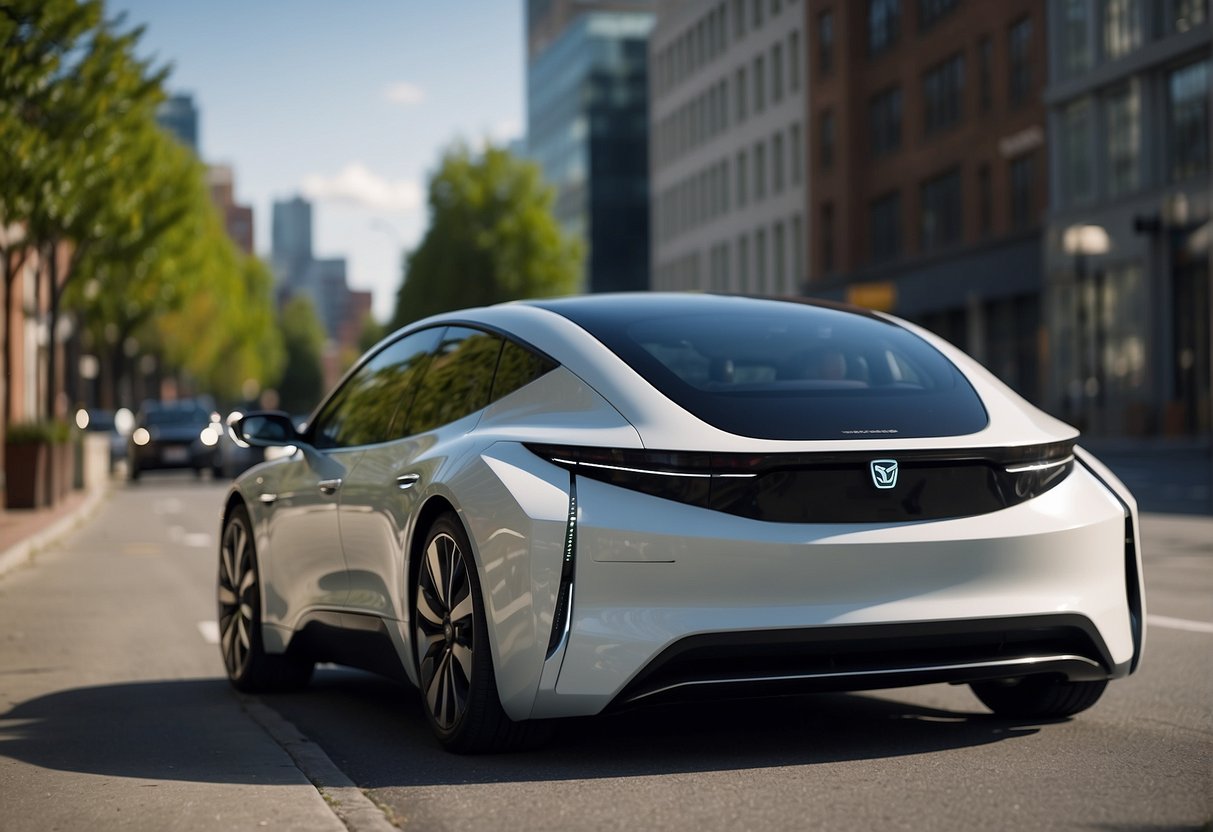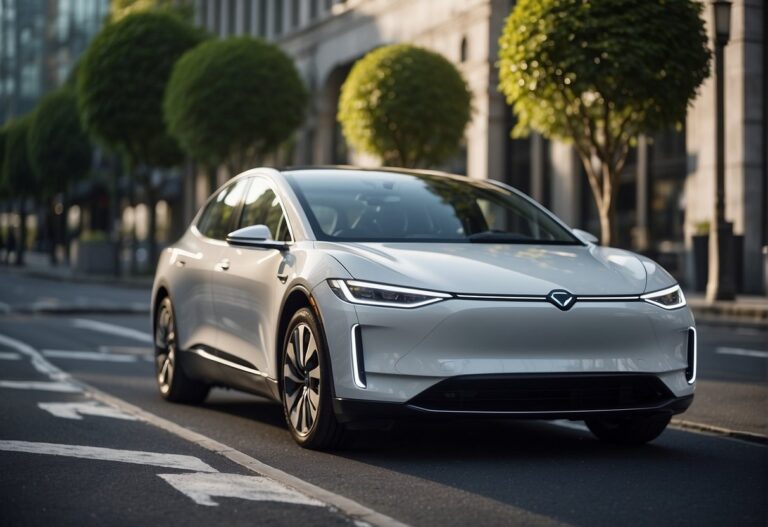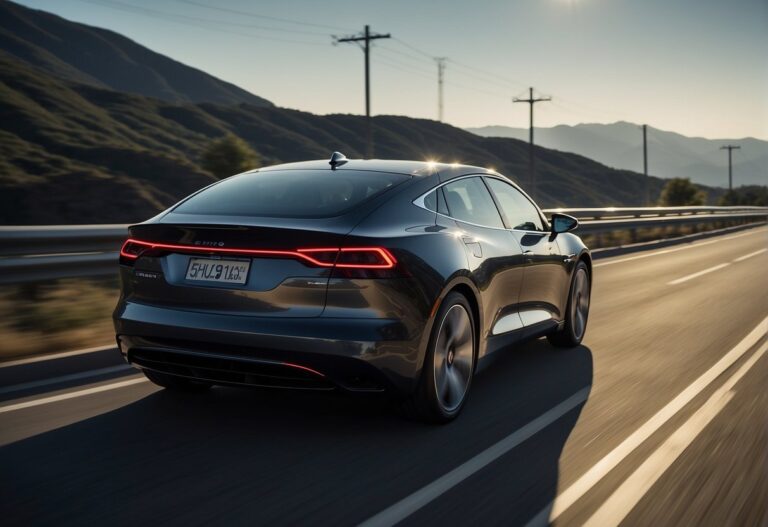Autonomous driving features in electric cars have been a topic of interest for many car enthusiasts. These features have the potential to revolutionize the way people drive and make the roads safer. With the increasing popularity of electric cars, it is no surprise that many manufacturers are incorporating autonomous driving features into their vehicles.
One of the most notable autonomous driving features is Tesla’s Autopilot. This feature allows the car to steer, accelerate, and brake on its own, with the driver only needing to pay attention and take control if necessary. The Autopilot system also includes features such as Navigate on Autopilot, which suggests lane changes to optimize the route and avoid slow-moving cars or trucks.
Other car manufacturers are also incorporating autonomous driving features into their electric cars. The 2023 Cadillac Escalade, for example, comes with autonomous driving features that allow the car to accelerate, brake, and steer on its own. The 2023 Ford F-150 also comes with autonomous driving features that allow the car to park itself and navigate through traffic. As more car manufacturers continue to develop and incorporate these features into their vehicles, the future of autonomous driving in electric cars looks promising.
Evolution of Autonomous Driving
Historical Milestones
The concept of autonomous driving has been around for several decades. In 1925, the first autonomous vehicle, a radio-controlled car, was demonstrated in New York City. However, it was not until the 1980s that the idea of autonomous driving started to take shape. The first self-driving car was developed by Mercedes-Benz in 1980, which used a LIDAR sensor to navigate.
Ford was the first company to introduce an Advanced Driver Assistance System (ADAS) in 2008, which was capable of parallel parking. In 2010, Google began testing its self-driving car on public roads in California. Tesla introduced its Autopilot system in 2014, which was capable of automatic steering, lane changing, and parking.
Key Technological Advancements
The development of autonomous driving technology has been driven by advancements in software, sensors, hardware, and computers. The most important sensors used in autonomous driving are LIDAR, cameras, and radar. LIDAR sensors use laser beams to create a 3D map of the environment, while cameras and radar are used to detect objects and obstacles.
The software used in autonomous driving is responsible for processing the data from the sensors and making decisions about how the vehicle should behave. Machine learning algorithms are used to improve the accuracy of the software and make it more reliable.
Regulatory and Safety Considerations
The development of autonomous driving technology has raised a number of regulatory and safety concerns. One of the biggest concerns is the safety of autonomous vehicles. In 2018, a pedestrian was killed by an autonomous Uber vehicle in Arizona, which raised questions about the safety of self-driving cars.
Regulation is another important consideration in the development of autonomous driving technology. California was the first state to pass regulations for autonomous vehicles in 2012. Since then, several other states have passed similar regulations.
In conclusion, the evolution of autonomous driving technology has been a long and complex process that has involved engineers, society, regulation, and industries. Companies like Ford, Tesla, and Waymo have made significant contributions to the development of autonomous driving technology, which has been driven by advancements in sensors, software, and hardware. However, safety and regulatory concerns continue to be a major challenge for the industry.
Integration in Electric Vehicles
Autonomous Features in Modern Electric Cars
As technology continues to advance, automakers are integrating autonomous features into modern electric cars. Tesla, for example, offers Autopilot and Full Self-Driving Capability, which allow the car to drive itself on highways and navigate city streets with minimal input from the driver. Other automakers, such as Cadillac, offer Super Cruise, which is a hands-free driving system that uses cameras, sensors, and mapping data to enable the car to drive itself on highways.
Infrastructure and Ecosystem
The integration of autonomous features in electric cars requires a robust charging infrastructure and ecosystem. The charging infrastructure must be able to support the increased demand for electric power that comes with the use of autonomous features. Additionally, the ecosystem must be able to support the development of robotaxis, which are autonomous electric vehicles that can be hailed by passengers using a smartphone app.
Impact on Consumers and Society
The integration of autonomous features in electric cars has the potential to significantly impact consumers and society. On the one hand, it could lead to increased safety on the roads, as autonomous features can help reduce the number of accidents caused by human error. On the other hand, it could lead to job losses for human drivers, particularly in the transportation industry.
Furthermore, the increased use of electric vehicles and the development of a charging infrastructure could have a positive impact on the environment by reducing emissions. However, the production and disposal of electric vehicle batteries could also have a negative impact on the environment if not managed properly.
In conclusion, the integration of autonomous features in electric cars is a rapidly evolving field that has the potential to significantly impact consumers and society. While the benefits of increased safety and reduced emissions are clear, the impact on human drivers and the environment must also be considered.
Frequently Asked Questions
What are the key safety features in self-driving electric vehicles?
Self-driving electric vehicles come with a range of safety features that are designed to ensure the safety of passengers and other road users. These features include adaptive cruise control, lane departure warning, collision avoidance systems, and pedestrian detection. These features work together to help the vehicle avoid accidents and keep passengers safe.
How do advancements in AI contribute to self-driving car technology?
Advancements in AI have played a significant role in the development of self-driving car technology. AI systems are used to process information from sensors and cameras to help the vehicle perceive its environment and make decisions. This allows the vehicle to navigate complex environments and make real-time decisions to avoid obstacles and ensure passenger safety.
What levels of autonomy are available in electric cars on the market today?
Electric cars on the market today range from level 1 to level 4 autonomy. Level 1 vehicles have basic driver assistance features, while level 2 vehicles have more advanced features such as adaptive cruise control and lane keeping assistance. Level 3 vehicles are capable of driving themselves in certain conditions, while level 4 vehicles are fully autonomous and can operate without any human intervention.
Which manufacturers offer the most advanced autonomous driving systems in their electric vehicles?
Several manufacturers offer advanced autonomous driving systems in their electric vehicles. Tesla is a leader in this field, with its Autopilot system offering advanced features such as automatic lane changing and self-parking. Other manufacturers such as Audi, BMW, and Mercedes-Benz also offer advanced autonomous driving systems in their electric vehicles.
How does the integration of electric powertrains and autonomous driving technology enhance vehicle performance?
The integration of electric powertrains and autonomous driving technology can enhance vehicle performance in several ways. Electric powertrains offer instant torque, which can improve acceleration and overall performance. Autonomous driving technology can also help improve performance by optimizing driving patterns and reducing energy consumption.
What are the most cost-effective electric cars with advanced self-driving capabilities?
Currently, the most cost-effective electric cars with advanced self-driving capabilities are the Tesla Model 3 and the Nissan Leaf. Both vehicles offer advanced autonomous driving features at a relatively affordable price point. However, it’s important to note that the cost of autonomous driving technology is still relatively high, and prices are likely to come down as the technology becomes more widespread.



